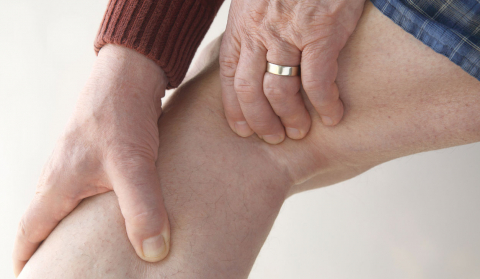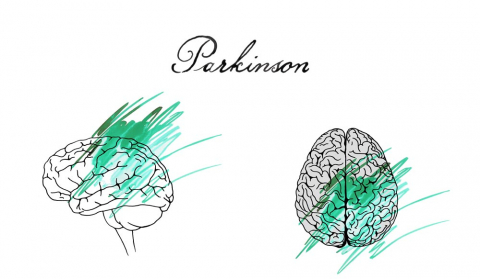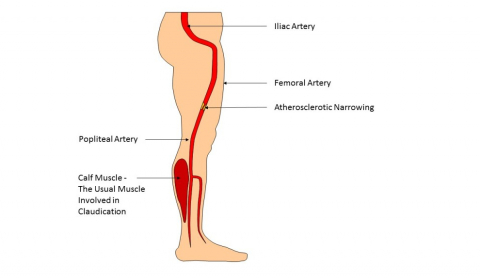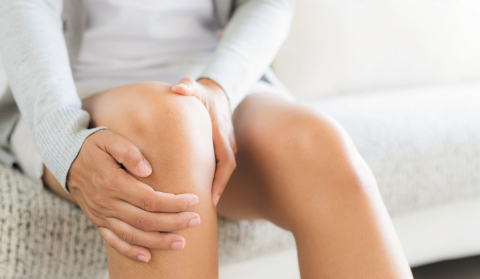
Registration


Three Nordic Walking routes (18.2 km total) have been created in Zwierzyniec, passing through Roztoczański National Park and Zwierzyniec Forest District. Routes 1 and 2 form loops starting at the "Zwierzyniec" area.

In response to growing interest in active recreation, local governments have launched initiatives promoting Nordic Walking in Poland. These projects successfully popularize the sport and encourage physical activity, shaping future developments in public health.

The study confirms that Nordic Walking improves upper limb fitness and mobility in people with Parkinson's disease, with effects lasting up to five months. It is a safe and effective way to enhance their activity levels and quality of life.

Using poles in gait therapy helps improve posture, trunk stability, coordination, and concentration. It enhances muscle activation, trunk rotation, and shoulder mobility while maintaining optimal balance and reducing upper limb tension.

The study found that most participants believe Nordic Walking improves physical fitness and brings positive feelings like satisfaction. While not everyone noticed physical improvements, no negative emotions were reported. The majority plan to continue using poles in the future.

This study compared kinematic, kinetic, and dynamic parameters between Nordic Walking (NW) and Natural Walking (W) at different speeds. Results showed no significant differences between NW and W, except for increased pelvic anteversion at higher NW speeds. Gait parameters were influenced by speed rather than walking style.

This study assessed energy expenditure (EE) and exercise heart rate (EHR) in Nordic Walking (NW) and conventional walking (W) among university students. Results showed that NW significantly increased EE and EHR compared to W, regardless of speed or gender, suggesting its potential for preventing hypokinetic disorders.

This study surveyed 500 students (ages 11-18) in the Pomeranian province to assess Nordic Walking's attractiveness compared to other activities. Results showed diverse opinions, highlighting the need for further research on student preferences in PE planning. Nordic Walking is expected to gain popularity as its health benefits become more recognized.

This study examined the effects of Nordic Walking and water aerobics on venous blood flow and body composition in women over 50. After 8 weeks, Nordic Walking improved venous circulation, increased fat-free mass, and reduced body fat and BMI, while water aerobics showed no similar effects.

This study analyzed plantar pressure in Nordic Walking (NW) using the Diagonal (DT) and Alpha (AT) techniques compared to normal walking (W). Results showed that AT reduced pressure under key foot areas more effectively than DT at a preferred speed. Both NW techniques lowered pressure under the Hallux and Central Metatarsals compared to W. AT may be the best technique for reducing plantar pressure while maintaining NW’s benefits.

This study examines the popularity of Nordic Walking, focusing on participants' activity levels and health priorities. Based on a survey of 40 respondents, it found that Nordic Walking is most popular among middle-aged women in urban areas with higher education. The sport enhances health, well-being, and social interactions, with 90% correctly associating it with walking poles.

Nordic Walking is an effective form of physical activity that enhances overall fitness and improves health. This study explores its impact on the human body, highlighting benefits such as cardiovascular improvement, muscle strengthening, and enhanced coordination.

This study analyzes the biomechanics of Nordic Walking for patients with osteoporotic vertebral fractures, demonstrating its suitability. A modified walking method was developed, allowing patients to stay active, reduce social isolation, and enjoy safe outdoor exercise with minimal costs.

This study examined the impact of Nordic Walking on the physical fitness of elderly individuals over 12 weeks. Participants showed improved aerobic endurance, reduced body mass, a better waist-to-hip ratio, and increased lumbar spine flexibility, especially among previously inactive individuals.

This study examined the effects of Nordic Walking on women with fibromyalgia. Over 15 weeks, participants showed improved functional capacity, greater endurance, and a lower exercise heart rate compared to a low-intensity walking group. Nordic Walking proved to be a feasible and beneficial exercise for managing fibromyalgia symptoms.

This study assessed the physiological responses and perceived exertion of Nordic Walking (NW) in COPD patients. Results showed that NW leads to higher oxygen uptake, ventilation, and heart rate compared to standard walking, demonstrating its feasibility as a beneficial exercise for COPD management.

A 32-week Nordic Walking training program in elderly women significantly reduced blood ferritin levels, indicating decreased body iron stores. The training also improved cardiorespiratory fitness and influenced iron metabolism-regulating proteins, suggesting potential health benefits.

Nordic Pole Walking (NPW) significantly increased walking distance and reduced leg pain in patients with intermittent claudication during a treadmill test. Despite higher cardiopulmonary workload, perceived exertion did not increase. NPW may serve as an effective exercise strategy for improving mobility and cardiovascular fitness in these patients.

Nordic Walking (NW) is a low-impact exercise that enhances the benefits of regular walking, making it a safe and effective option for the elderly. It helps improve physical fitness while minimizing the risk of musculoskeletal injuries, making it suitable for individuals with age-related coacnditions like osteoarthritis.

Nordic walking alone does not significantly reduce lymphoedema in breast cancer survivors, but when combined with the Isa method, it effectively decreases extracellular body water and upper limb circumference. The Isa method enhances muscle activation, improving outcomes.

Nordic walking significantly improves balance, lower extremity strength, and reduces weakness and depression in frail individuals over 70 years old, making it more effective than general exercise.

A field study analyzing biomechanical loading during Nordic Walking found no significant reduction in lower limb load, contradicting claims of 30-50% relief. The study emphasizes Nordic Walking's physiological and motivational benefits over joint-load reduction.

This study analyzed loading parameters in Nordic Walking (NW) versus ordinary walking (W) regarding injury risks. NW resulted in higher loading rates, horizontal forces, and pronation values, while lower limb loads remained relatively small. However, wrist accelerations reached up to seven times gravitational acceleration, indicating potential overuse injuries in the upper extremities. To prevent such injuries, shock-absorbing poles and upper limb strengthening exercises are recommended.

This study examined the effects of Nordic walking (NW) on depression and sleep disorders in older adults. Twenty-four patients were randomly assigned to a NW or classical walking group, training for 50 minutes, three times a week for eight weeks. Results showed that NW had a positive impact on both depression and sleep quality, highlighting its potential as an effective exercise intervention for older people with these conditions.

This study assessed the impact of Nordic Walking (NW) on autonomic nervous system (ANS) activity in chronic heart failure (CHF) patients. A total of 111 CHF patients were randomized into an NW training group (8 weeks, 5 times per week) or a control group. Results showed that NW improved heart rate variability (HRV) and parasympathetic-sympathetic balance, correlating with increased peak oxygen consumption (VO2). However, no significant effect on heart rate turbulence (HRT) was observed.

Nordic Walking training enhances quality of life, benefiting both physical and mental health. Promoting an active lifestyle in late adulthood contributes to longevity and overall well-being.

Nordic Walking encourages greater daily physical activity among women compared to other exercise forms. While different activities help maintain functional fitness, combining gymnastics and water activities may be particularly effective in preserving fitness levels with age.

Strength and endurance training improve walking distance and muscle strength more effectively than treadmill or Nordic Walking training in patients with stasis chroma. However, all rehabilitation programs studied had a positive impact on endurance and muscle strength.

Nordic Walking improves dynamic gait stability in Parkinson’s disease by providing rhythmic external cues through upper body movement. After three practice sessions, patients showed enhanced stride length, gait speed, and temporal gait organization, suggesting Nordic Walking as an effective strategy to manage gait disorders in Parkinson’s disease.

Nordic Walking (NW) offers significant physiological and psychosocial benefits for cancer patients, particularly in managing cancer-related fatigue and pain. By engaging both the upper and lower body, NW increases oxygen consumption and energy expenditure while maintaining low perceived exertion, potentially improving adherence to exercise programs. It may be an effective intervention for enhancing physical fitness during radiotherapy, though further research is needed.

A 12-week home exercise programme (HEP) augmented with Nordic Pole Walking (NPW) significantly improved walking distance, speed and quality of life in people with stopping chrome, with excellent long-term compliance (98% at 12 months). The NPW group showed better improvement compared to normal walking, with lower costs and better adherence than many supervised exercise programmes. These results support further research comparing NPW-based HEP with traditional supervised exercise programmes.

A study on 34 patients with medial knee osteoarthritis and varus alignment found that walking poles do not reduce knee adduction moments or medial compartment loads. While individual technique may influence results, walking poles should not be recommended based on the assumption that they decrease knee joint loading in these patients.

A study on community-dwelling elderly in a day service center examined the effects of pole walking on physical fitness, posture, and quality of life (QoL). Over three months, the pole walking group showed improved QoL scores, while the control group experienced a decline in mobility. However, no significant changes in physical function were observed due to the intervention.

A feasibility study on Nordic walking for women with aromatase inhibitor-associated arthralgia (AIAA) found high adherence (>90% supervised, >80% independent) and no serious adverse effects. Over 12 weeks, pain decreased, and activity levels increased in both the intervention and control groups, indicating Nordic walking is a safe and acceptable exercise option.

A study evaluated the effects of structured Nordic Walking training in women with type 2 diabetes. Twenty participants (aged 40–65) were randomized into a Nordic Walking group or a control group receiving physical activity counseling. The study assessed anthropometric, metabolic, and bioelectrical changes pre- and post-intervention, with a 6-month follow-up. Nordic Walking proved to be an accessible and effective exercise option for diabetes management.

A randomized controlled trial examined the effects of Nordic Walking on rehabilitation for patients with acute coronary syndrome (ACS) and peripheral arterial occlusive disease (PAOD). Over four weeks, 42 patients were divided into a Nordic Walking group and a walking group without poles. The study found that Nordic Walking was more effective in increasing walking distance on the 6-minute walk test, suggesting its potential benefits for cardiovascular rehabilitation.
© 2024 onwf.org | Original Nordic Walking from Finland